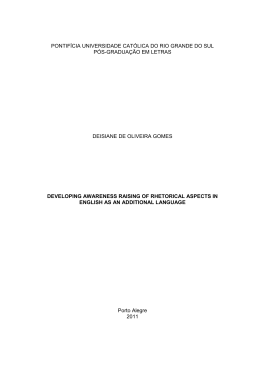Variability in tone and gesture within language Marisa Cruz1, Marc Swerts2 & Sónia Frota1 University of Lisbon1, Tilburg University2 [email protected], [email protected] & [email protected] Intonational systems may vary between languages [1, 2, 3], and between language varieties [4, 5, 6]. Previous studies on facial gestures as a complement of spoken language revealed that visual signals are organized into a system sharing several features with the prosody of spoken language [7, 8, 9]. Thus, it is reasonable to assume that visual cues also vary across languages and language varieties. Moreover, variation in gesture could mirror intonational variation, or compensate lack of tonal contrast. However, the variability of gestures (if any) and its relation with intonational variation remains largely understudied. Visual prosody in European Portuguese (EP) has not received much scholarly attention. This work taps into the tone/gesture relation in EP by addressing three main questions: (i) Do EP varieties use different facial gestures to convey the same sentence type/pragmatic meaning? (ii) Is variation in the visual domain related to intonational variation? (iii) What are the best predictors for facial gestures (sentence type, pragmatic meaning, intonation, or region)? Facial gestures from the InAPoP audiovisual database [10], obtained by means of a Discourse Completion Test, were analyzed in four EP varieties previously described for intonation [11, 12, 13, 14, 15]: the Standard variety (SEP), two central-southern varieties (Ale, Alg), and one insular variety (Azores-PtD). A total of 197 utterances of two sentence types (statements/yes-no questions) and pragmatic meanings (broad/narrow focus statements), produced by three speakers (20-45 years old) per variety, were annotated for facial gestures following FACS [16]. Potential visual parallels for intonational features (pitch accent, boundary tone, and nuclear contour configuration) were inspected. Results are given in Table1. Broad focus statements were produced with the same facial gesture across varieties, co-occurring with the same contour type. Narrow focused statements also show the same nuclear contour across varieties and basic facial gesture, but display more visual complexity (additional varying cues). By contrast, yes-no questions show different intonational patterns co-occurring with different head movements. However, the concomitant eyebrow raising characterizes interrogativity across varieties. Overall, yes-no questions present greater variability of both tonal and visual cues than statements (Figure1), and narrow focused statements exhibit more variability than broad focus statements, especially in the visual domain, but less variability than yes-no questions. Moreover, not all varieties display similar patterns of variability (Figure2). These results suggest that sentence type, pragmatic meaning, and region have an impact on facial gestures. To determine which factors contribute the most to the variability found in gestures, two multinomial logistic regressions (facial gestures timed with nuclear pitch accent (NPA); facial gestures timed with boundary tone (BT)) were run. Region*sentence type have a significant effect on facial gestures timed with NPA type and with BT type. Sentence type*pragmatic meaning were also good predictors of gestures. However, region alone is not a good predictor, unlike sentence type or pragmatic meaning (Table2). In conclusion, visual cues, like intonational cues, may vary across varieties, sentence type and pragmatic meaning. Since in production facial gestures are affected by linguistic and nonlinguistic factors, we hypothesize that speakers across varieties will be sensitive to visual information, especially in the absence of tonal contrast (e.g. SEP perceiving PtD questions, see also Figure2), and in the presence of audio-visual mismatches. These predictions will be addressed in future research. Statements EP SEP Broad focus Tonal Visual Tonal H+L* head up-down L% neutral position (H+)L* head up-down L% neutral position L% neutral position H% head up-down H*+L head up-down +eyes closed L*+H L% neutral position L% neutral position H% (H+)L* head up-down H*+L L% neutral position L% Ale H+L* Alg PtD Questions Narrow focus Tonal Visual head up-down H*+L +eyebrow raising L% neutral position head up-down H*+L +eyebrow lowering head up-down +eyebrow raising neutral position H+L* LH% (H+)L* (H+)L* L% Visual head up-down +eyebrow raising neutral position head up-down +eyebrow raising head back-forward +eyebrow raising eyebrow raising head back-forward (+eyebrow raising) head up-down +eyebrow raising neutral position Table 1 – Visual cues aligned with pitch accent/boundary tone types per sentence type (statements versus questions) and per pragmatic meaning (broad focused versus narrow focused statements) across EP varieties (SEP, Ale, Alg, and PtD). The dominant tone and gesture patterns across and within speakers are represented. Figure 1 – Variability of tonal and visual cues in broad focus statements (left top), narrow focused statements (right top) and yes-no questions (bottom) across EP varieties. Within and across speaker variation is represented. Multinomial Logistic Regression Predictors of facial gestures timed with NPA Predictors of facial gestures timed with BT Sentence type χ² (5)=28.24, p=.000 Sentence type χ² (3)=10.51, p=.015 Pragmatic meaning χ² (5)=13.66, p=.018 Pragmatic Meaning χ² (3)=12.30, p=.006 Region χ² (15)=18.68, p=.229 Region χ² (9)=10.05, p=.346 Region*Sentence Type χ² (30)=49.16, p=.015 Region*Sentence Type χ² (18)=36.27, p=.007 Sentence type*Pragmatic meaning χ² (5)=43.07, p=.000 Sentence type*Pragmatic meaning χ² (3)=11.79, p=.008 Table 2 –Results for the two multinomial logistic regressions: facial gestures timed with NPA (left) and facial gestures timed with BT (right). Figure 2 – Variability of tonal and visual cues across sentence types in SEP and PtD (zooming-in main tonal patterns). More visual variability relates to tonal contrast between sentence types (SEP); less variability to absence of tonal contrast between sentence types (PtD). Submission for talk/poster References: [1] Gussenhoven, C. 2004. The Phonology of Tone and Intonation. Cambridge: Cambridge University Press. [2] Ladd, D. R. 2008. Intonational Phonology. 2ª ed., Cambridge: Cambridge University Press. [3] Jun, S.-A. (Ed.). 2014. Prosodic Typology II: The Phonology of Intonation and Phrasing. Oxford: Oxford University Press. [4] Bruce, G. 2005. Intonational prominence in varieties of Swedish revisited. In S.-A. Jun (Ed.), Prosodic Typology I. The Phonology of Intonation and Phrasing (pp. 441-429). Oxford: Oxford University Press. [5] Prieto, P. & P. Roseano (Eds.). 2010. Transcription of Intonation of the Spanish Language. Lincom Europa: München. [6] Frota, S. & P. Prieto (Eds.). In press. Intonation in Romance. Oxford: Oxford University Press. [7] Krahmer, E., & M. Swerts (Eds.). 2009. Audiovisual prosody (special issue). Language and Speech, 52(2-3), 129-386. [8] Mol, L., E. Krahmer, A. Maes & M. Swerts. 2011. Seeing and Being Seen: The effects on gesture production. Journal of Computer-Mediated Communication, 17(1), 77-100. [9] Loehr, D. P. 2012. Temporal, structural, and pragmatic synchrony between intonation and gesture. Laboratory Phonology. Special Issue Gesture as Language, Gesture and Language 2, 3(1), 71-89. [10] Frota, S. (Coord.). 2012-2015. InAPoP – Interactive Atlas of the Prosody of Portuguese Project. [Webplatform available at http://www.fl.ul.pt/LaboratorioFonetica/InAPoP/]. [11] Frota, S. 2000. Prosody and focus in European Portuguese. Phonological phrasing and intonation. New York: Garland Publishing. [12] Frota, S. 2014. The intonational phonology of European Portuguese. In S.-A. Jun (Ed.), Prosodic Typology II: The Phonology of Intonation and Phrasing (pp. 6-42). Oxford: Oxford University Press. [13] Cruz, M. 2013. Prosodic variation in European Portuguese: phrasing, intonation and rhythm in centralsouthern varieties. Unpublished PhD Dissertation, University of Lisbon. [14] Crespo-Sendra, V., M. Cruz, J. Silva & S. Frota. 2014. Asking questions across Portuguese varieties. Talk given at the 6th International Conference on Tone and Intonation in Europe (TIE), September 10-12, University of Utrecht, Netherlands. [15] Frota, S., M. Cruz, F. Fernades-Svartman, M. Vigário, G. Collischonn, A. Fonseca, C. Serra & P. Oliveira. In press. Intonational variation in Portuguese: European and Brazilian Varieties. In S. Frota & P. Prieto (Eds.), Intonation in Romance. Oxford: Oxford University Press. [16] Ekman, P., W. V. Friesen & J. C. Hager. 2002. Facial Action Coding System. Salt Lake City, UT: A Human Face.
Download

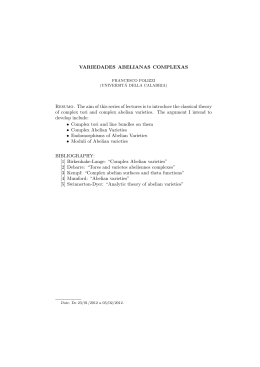
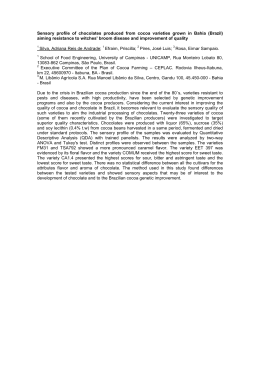
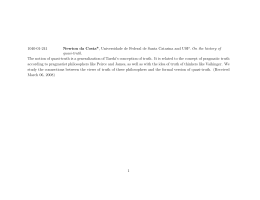


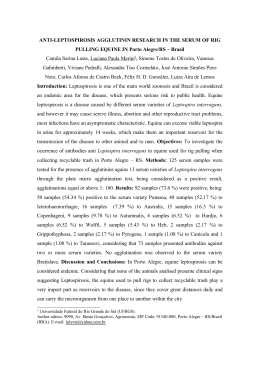
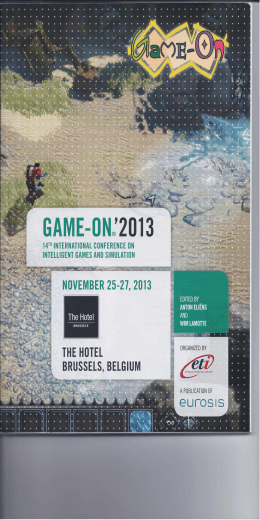
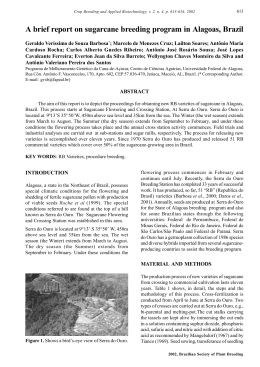
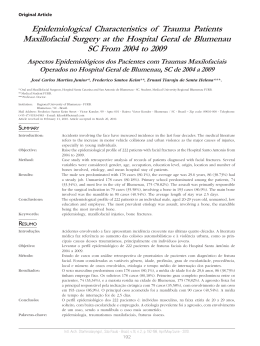
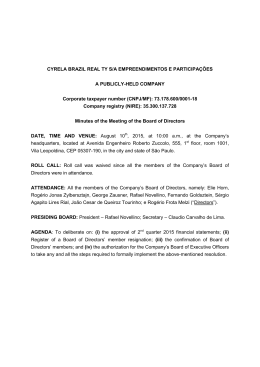
![LAW-IV [A4] - Maria Clara Paixão de Sousa](http://s1.livrozilla.com/store/data/001665394_1-c6e043062dfe6eca00528e53de9c0997-260x520.png)
